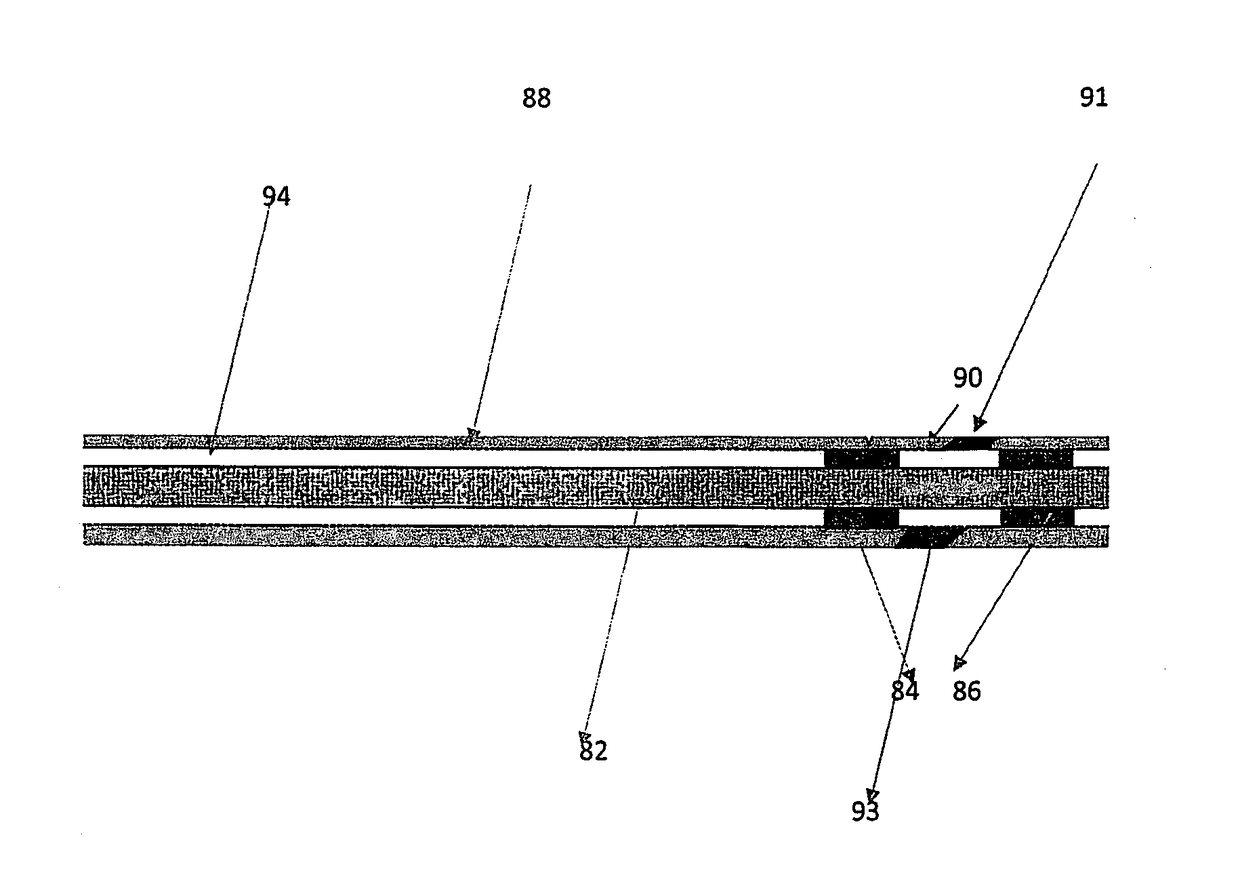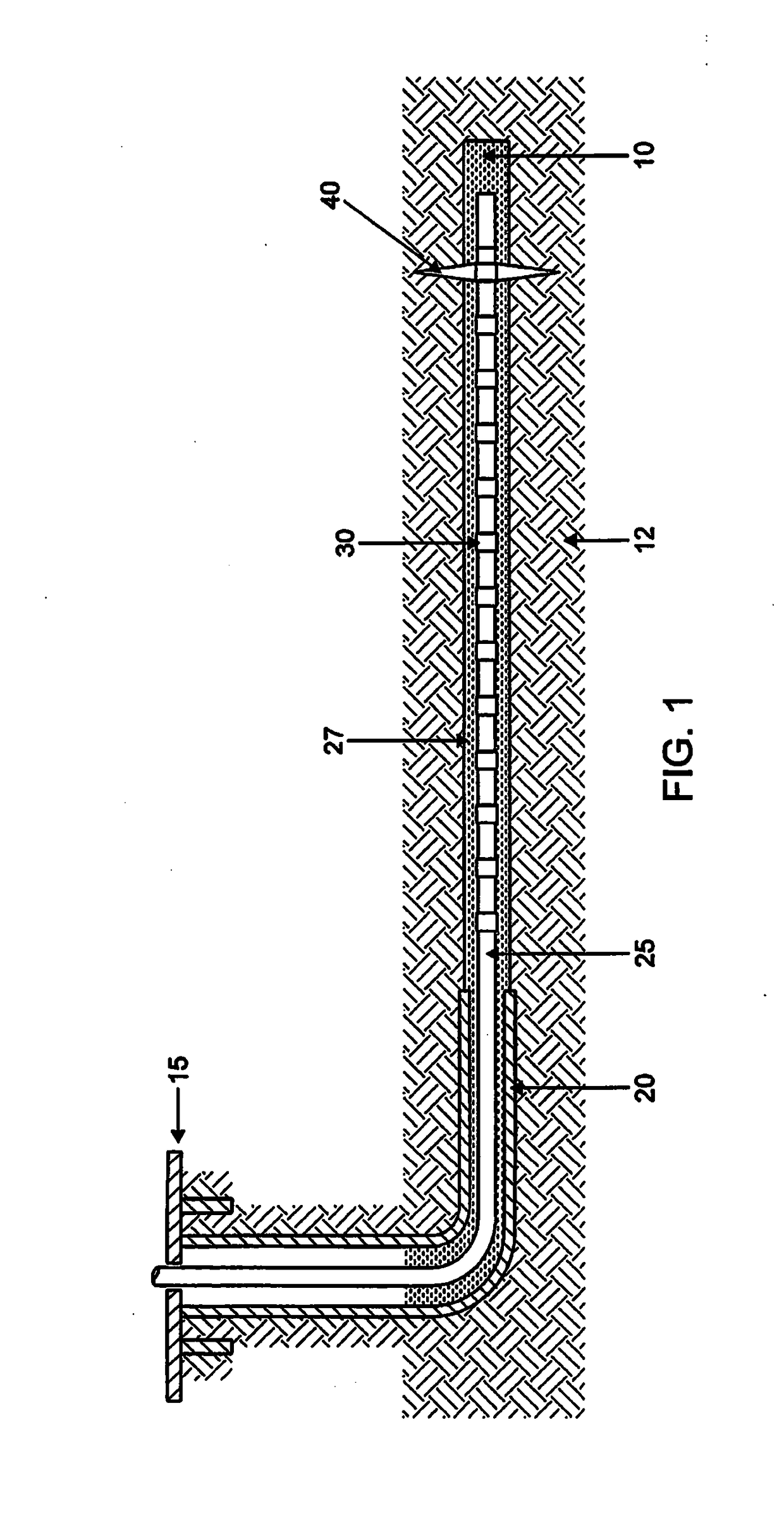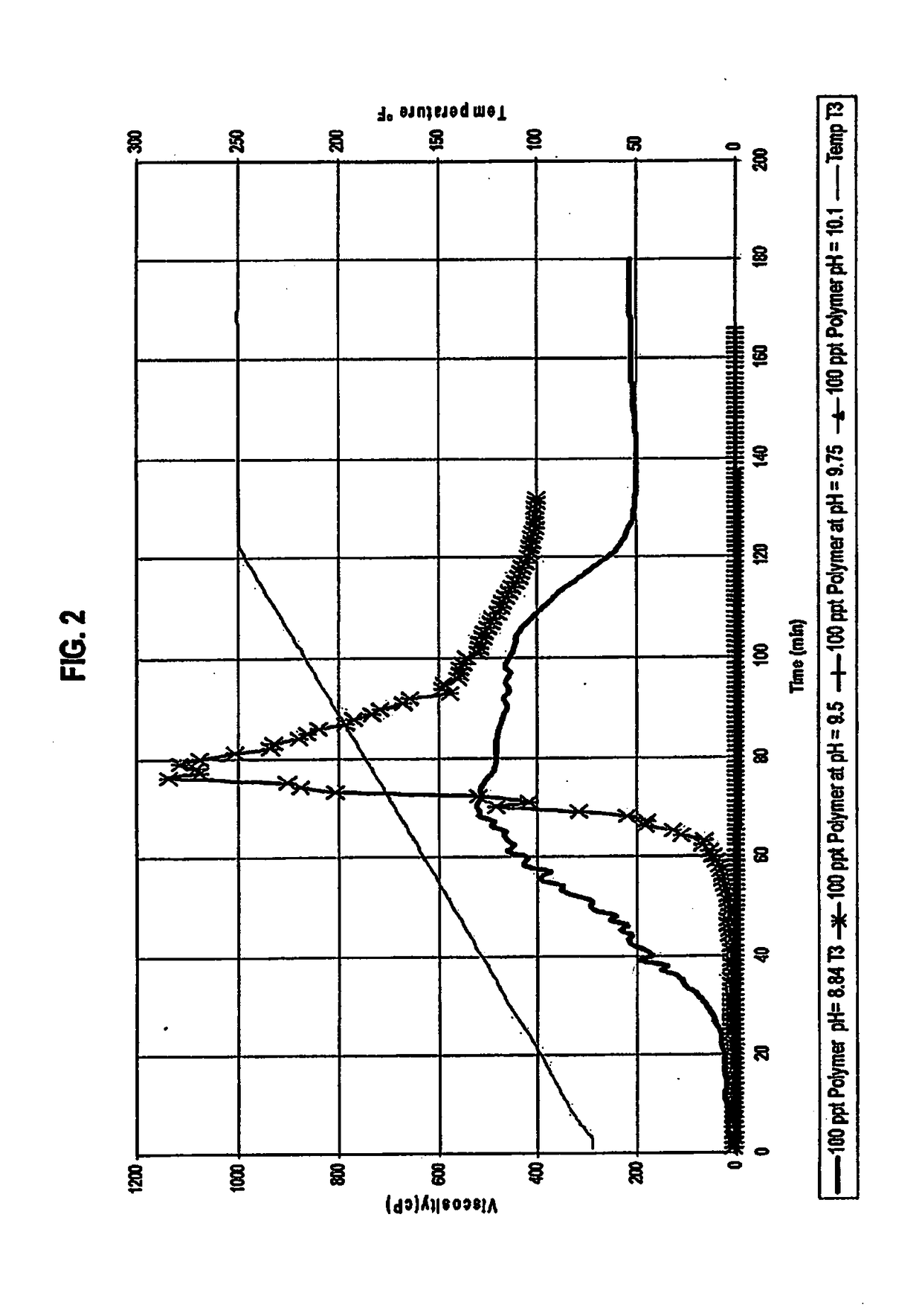Well intervention method using a chemical barrier
a chemical barrier and well treatment technology, applied in the field of well treatment, can solve the problems of delayed hydration of well treatment fluid, and achieve the effects of facilitating the degradation of borated galactomannan gum, reducing viscosity, and particular applicability
- Summary
- Abstract
- Description
- Claims
- Application Information
AI Technical Summary
Benefits of technology
Problems solved by technology
Method used
Image
Examples
example 1
[0099]The effect of varying levels of pH on the start of gel hydration was tested using viscosity measurements. The results are set forth in FIG. 2. For each test run, the gel was created using 100 ppt Polymer in water. This slurry had a pH of 8.84. The pH was increased with a sodium hydroxide solution (10% by weight in water) to values of 9.5, 9.75 and 10.1. The slurry was loaded in to the viscometer and viscosity measured at a shear rate of 100 sec-1. The temperature of the viscometer was ramped from 70° F. to 250° F. in two hours and was then kept constant at 250° F. for an additional hour. FIG. 2 demonstrates that pH affects the viscosity in the following manner:[0100]a. pH higher than 9.75 caused the gel not to hydrate and become viscous at all;[0101]b. at a pH of 9.5, the gel's viscosity starts to increase after 60-65 minutes, but the viscosity was short lived; and[0102]c. at a pH of 8.84, the gel's viscosity starts to increase after 30 minutes, much like its performance at ro...
example 2
[0103]Using the above procedure, the effect of adding borax as a delayer while maintaining a pH of 9.5 was examined. The results are set forth in FIG. 3. For each run, the gel was created using 100 ppt Polymer in water and sodium hydroxide solution to adjust the pH. Borax was added in 1%, 2%, 3% by weight of Polymer as a delaying agent. The slurry was loaded in to the viscometer and viscosity measured at a shear rate of 100 sec-1. The temperature of the viscometer was ramped from 70° F. to 250° F. in two hours and was then kept constant at 250° F. for an additional hour. The results show that borax by itself (without any pH adjustment) did little to delay hydration, however, when coupled with an increase of pH from 8.84 to 9.5, made a significant difference in slowing the hydration rate. Specifically:[0104]a. the control run of the gel at the natural pH of 8.84 and 2% Borax by weight of polymer showed little difference in hydration;[0105]b. the gel adjusted to a pH of 9.5 with 1% Bo...
example 3
[0108]The effect of pH and delayer on hydration time was examined and the results are set forth in FIG. 4. For each test run, the gel was created using 100 ppt Polymer in water. This slurry had a pH of 8.84. The pH to lower values was obtained by adding acetic acid until pH values of 8.5 and 8.75 were obtained. The pH to higher levels was obtained by the addition of a sodium hydroxide solution (10% by weight in water) to pH values of 9 and 9.2. The slurry was loaded in to the viscometer and viscosity measured at a shear rate of 100 sec-1. The temperature of the viscometer was ramped from 70° F. to 100° F. in 30 minutes and was then kept constant at 100° F. for an additional 90 minutes. In some of the runs, borax was added as a delayer. The results show that hydration time can be changed with changes in pH. Specifically:[0109]a. the gel at the natural pH of 8.84 and 3% borax by weight of Polymer showed little difference in hydration;[0110]b. the gel with no delayer and adjusted to a ...
PUM
| Property | Measurement | Unit |
|---|---|---|
| temperature | aaaaa | aaaaa |
| molar ratio | aaaaa | aaaaa |
| molar ratio | aaaaa | aaaaa |
Abstract
Description
Claims
Application Information
 Login to View More
Login to View More - R&D
- Intellectual Property
- Life Sciences
- Materials
- Tech Scout
- Unparalleled Data Quality
- Higher Quality Content
- 60% Fewer Hallucinations
Browse by: Latest US Patents, China's latest patents, Technical Efficacy Thesaurus, Application Domain, Technology Topic, Popular Technical Reports.
© 2025 PatSnap. All rights reserved.Legal|Privacy policy|Modern Slavery Act Transparency Statement|Sitemap|About US| Contact US: help@patsnap.com



